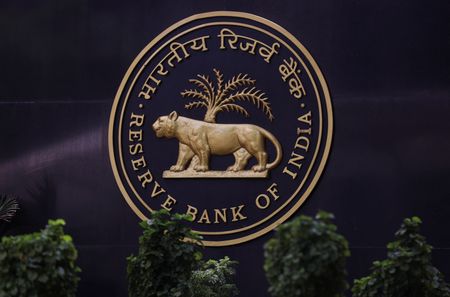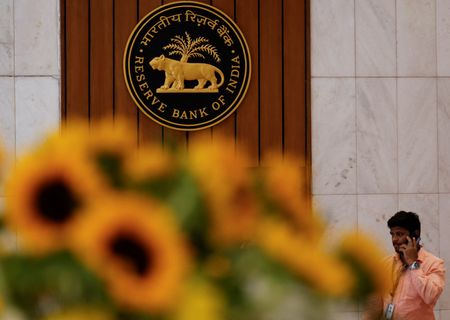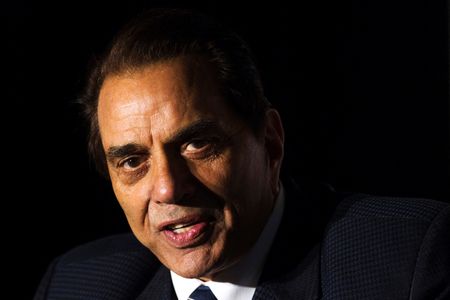By Pablo Sinha
(Reuters) -Gold prices rose more than 1% on Monday, supported by growing expectations of a Federal Reserve interest rate cut next month and ahead of fresh U.S. economic data for further clues on the monetary policy.
Spot gold gained 1.2% at $4,111.86 per ounce, by 01:43 p.m. EST (1843 GMT). U.S. gold futures for December delivery settled 0.4% higher at $4,094.2 per ounce.
“The market is increasingly getting convinced that the U.S. Federal Reserve is on track to cut interest rates in December,” said Bart Melek, head of commodity strategies at TD Securities.
New York Fed President John Williams said on Friday that U.S. interest rates could fall “in the near term” without putting the Fed’s inflation goal at risk, while helping guard against a slide in the job market.
Bets of a rate cut next month stand at 79%, the CME FedWatch tool showed on Monday.
Gold, a non-yielding asset, tends to do well in low-interest-rate environments, and during geopolitical and economic instability.
“We’re waiting for data and the expectation is that it may be somewhat weaker. Inflation probably not very elevated and that all points to gold doing fairly well,” Melek added.
Investors are looking out for key economic data that were delayed due to the government shutdown, including U.S. retail sales, jobless claims and producer price figures due later this week.
Meanwhile, the U.S. and Ukraine continued talks on Monday to craft an acceptable plan to end Russia’s war in Ukraine, after agreeing to revise an earlier U.S. proposal that many viewed as overly favorable to Moscow.
“With the Fed debate taking more headlines and geopolitical swings, especially vis-à-vis Ukraine, (gold) is still likely to catch a bid but in our view, it remains range bound between $4,000 and $4,100,” Rhona O’Connell, an analyst at StoneX, said in a note.
Spot silver added 1.7% to $50.84 per ounce, platinum rose 2.3% to $1,545.91, while palladium gained 1.7% to $1,398.21.
(Reporting by Pablo Sinha in Bengaluru; Additional reporting by Sarah Qureshi; Editing by Nick Zieminski, Matthew Lewis and Tasim Zahid)











